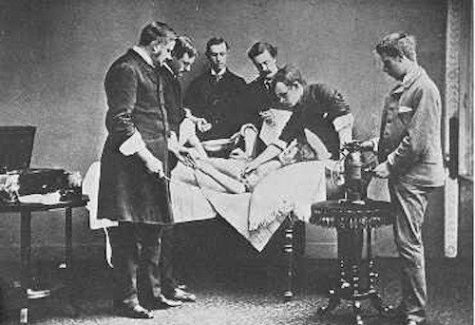October 17, 2018 by Siobhan Climer
While overall healthcare spending is up, CIOs and CTOs are reporting expected decreased funding for informatics and IT in 2019. A recent study by Healthcare Information and Management Systems Society (HIMSS) found the plurality of healthcare technology leaders in hospitals, ambulatory services, and LTPAC expect budget decreases. This is a big change from 2016, when reports abounded of budget growth and 40% of healthcare providers expected budget increases. In 2016, only 7% of those surveyed expected a budget decrease; in 2018, that number climbed to 43%.
 At the same time healthcare budgets are expected to fall, healthcare technology leaders expect an increase in responsibilities that directly affect patient safety and provider operations. 90% of healthcare leaders expect to face significant cybersecurity threats in 2019 and plan to increase security spend. Creating a healthcare technology IT budget is more challenging than ever, and the addition of new technologies and threats only adds to the complexity.
At the same time healthcare budgets are expected to fall, healthcare technology leaders expect an increase in responsibilities that directly affect patient safety and provider operations. 90% of healthcare leaders expect to face significant cybersecurity threats in 2019 and plan to increase security spend. Creating a healthcare technology IT budget is more challenging than ever, and the addition of new technologies and threats only adds to the complexity.
Top 5 IT Priorities For Healthcare Technology IT Budget
This priority list created by 2018 HIMSS respondents describes the way in which healthcare technology leadership views the role IT plays in the healthcare setting.
- Patient Safety
- Privacy, Security, and Cybersecurity
- Process Improvement, Workflow, Change Management
- Data Analytics/Clinical and Business Intelligence
- Clinical Informatics and Clinician Engagement
Patient Safety
Patient safety remains the main priority, and IT practices must meet this mission-critical objective. Patient safety leading the priority listing is no surprise; the Agency for Healthcare Research and Quality (AHRQ) and the World Health Organization (WHO) both identify patient safety as the top international priority for the healthcare community. How exactly does information technology benefit patient safety?
 Analytics and process improvements can go a long way toward improving patient outcomes; in fact, as many as 70% of adverse drug events could be prevented with better information access. The way that information is collected, shared, accessed, transmitted, and stored is the foundation for how that information is then used. Collaboration tools, strong networks, and secure, user-friendly interfaces are vital to healthcare professionals. The healthcare technology IT budget needs to take these needs into account, aligning best practices, technological innovations, and patient safety together for the best outcomes.
Analytics and process improvements can go a long way toward improving patient outcomes; in fact, as many as 70% of adverse drug events could be prevented with better information access. The way that information is collected, shared, accessed, transmitted, and stored is the foundation for how that information is then used. Collaboration tools, strong networks, and secure, user-friendly interfaces are vital to healthcare professionals. The healthcare technology IT budget needs to take these needs into account, aligning best practices, technological innovations, and patient safety together for the best outcomes.
Privacy, Security, and Cybersecurity
 A phishing attack exposed 1.4 million patient records from UnityPoint Health in Madison, Wisconsin. A Canadian pharmacist inappropriately accessed almost 50 records of acquaintances over nearly two years before being fined. 417,000 health records were breached in a phishing attack at Augusta University Health. A ransomware attack on Fetal Diagnostic Institute of the Pacific exposed almost 50,000 records.
A phishing attack exposed 1.4 million patient records from UnityPoint Health in Madison, Wisconsin. A Canadian pharmacist inappropriately accessed almost 50 records of acquaintances over nearly two years before being fined. 417,000 health records were breached in a phishing attack at Augusta University Health. A ransomware attack on Fetal Diagnostic Institute of the Pacific exposed almost 50,000 records.
These all happened over the course of three months in 2018. And the list goes on and on. EHRs are incredibly valuable on the black market, and hackers know where to get them. The complexity of the healthcare sector makes it expensive and difficult to secure. Yet setting aside room in the healthcare technology IT budget for security, data privacy measures, and backup and disaster recovery is essential. That ransomware attack on the Fetal Diagnostic Institute of the Pacific? They were able to restore their data from backups and use a security-focused partner to clean out the virus from their systems.
Process Improvement, Workflow, Change Management
Back in 2016, Forbes found that healthcare professionals spend nearly two-thirds of their time on the job completing paperwork. Unfortunately, that number has not budged over the past two years. Healthcare technology leadership can help by implementing documentation support processes (like voice recognition software or medical scribes), change management systems that integrate with the healthcare providers’ current platforms, and process improvement tools that reduce care variations and improve outcomes.
Budgeting for that isn’t easy. The key is to focus on a single systematic change at a time and plan strategically for operation objectives and incoming revenue. There is an endless list of tools, platforms, and technologies healthcare technology leaders could implement – and they would probably all help in some way – but finding the right tools that function in your unique environment takes planning. Performing a roadmap assessment is one way to ensure adequate gap analysis and objective-based implementation.
Data Analytics/Clinical and Business Intelligence
Data is the life force of medicine. To take a momentary tangent, perhaps you’ve heard of the famous Hungarian doctor Ignaz Semmelweis, who took his scientific analysis of two maternity wards at the General Hospital in Vienna in the mid-1800s quite seriously. The problem: the rate of maternal death attributed to childbed fever in one ward was five times higher than the other. But why? Semmelweis set forth to meticulously document possible causes of the variation, and, after many failed attempts, determined – due to his rigorous data collection and analysis – the cause was related to the delivery doctors’ proclivity to go straight from an autopsy to a delivery without washing their hands. This was, of course, before the advent of “germs”. Semmelweis’ discovery significantly (though, sadly, only momentarily) decreased the maternal death rate.

Why does this historical vignette matter? It validates the incredible value data collection and analysis offer the healthcare profession and explains why it ranks so highly on the priority listing. Today, healthcare providers have much more data to work with, but that data can become overwhelming if not managed appropriately. Healthcare technology IT budget planners can strategically plan for the tools healthcare providers need to support clinical decisions.
Clinical Informatics and Clinician Engagement
Clinical informatics is the application of information in healthcare by clinicians. For healthcare providers, this comes down to understanding, integrating, and applying information technology in the healthcare sector. This is the how for data analytics. Data analytic tools are only useful if there are people, processes, and systems in place to enable their use. When creating a healthcare technology IT budget, it is essential to work closely with clinical informatic specialists in all disciplines (nursing, pharmacy, clinical engineering, nutritional, physician, etc.) to ensure those that need the technology can use the technology.
Like what you read?
Contact us today for help designing a strategic healthcare technology IT budget.
About Mindsight
Mindsight, a Chicago IT consultancy and services provider, offers thoughtfully-crafted and thoroughly-vetted perspectives to our clients’ toughest technology challenges. Our recommendations come from our experienced and talented team of highly certified engineers and are based on a solid understanding of our clients’ unique business and technology challenges.
About The Author
Siobhan Climer, Science and Technology Writer for Mindsight, writes about technology trends in education, healthcare, and business. She previously taught STEM programs in elementary classrooms and museums, and writes extensively about cybersecurity, disaster recovery, cloud services, backups, data storage, network infrastructure, and the contact center. When she’s not writing tech, she’s writing fantasy, gardening, and exploring the world with her twin two-year old daughters. Find her on twitter @techtalksio.

